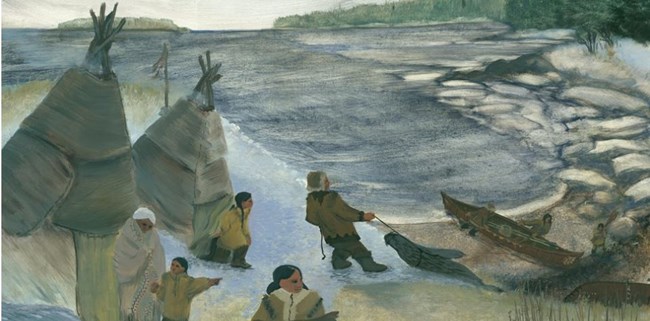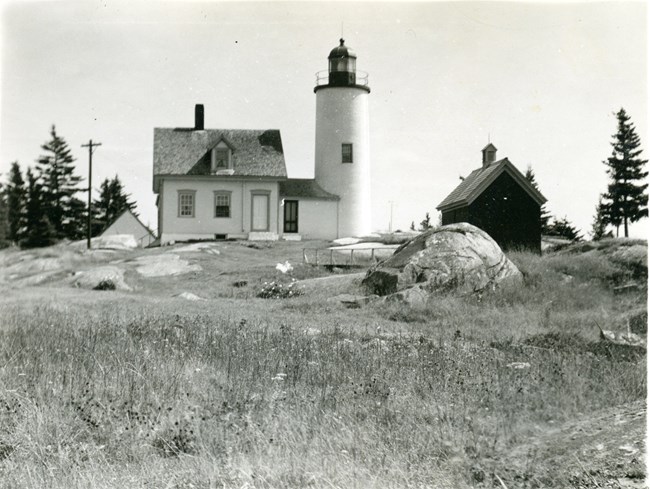
Abbe Museum Mount Desert Island and the Schoodic Peninsula were a vibrant, self-sustaining community for Wabanaki people that drew important resources from the sea for generations. Considering cultural-ecological and comparative historical information, it seems likely that this area minimally included all the coasts and islands in the region from Schoodic Peninsula (Gouldsboro) to Waukeg (Sullivan), Bagaduce River, Deer Isle and probably Isle au Haut. This seacoast domain would have also included a large forested hinterland providing highly mobile families of hunters, fishers and gatherers with more terrestrial game, fresh-water fish and other resources to fully support them on a year-round basis. This comprised the vast woodlands, marshes and lakes drained by the Union and Skillings Rivers and Sullivan Harbor effluence and emptying into the two major saltwater bays embracing Mount Desert Island – Blue Hill Bay and Frenchman Bay respectively. The sea provided an endless supply of meat for food and skins for clothing, as well as countless other tools useful in everyday life and can be found in many Wabanaki traditions still in practice today. Motivated by colonization, early Europeans arrived to this land by sea and were guided through Maine's treacherous waters by Wabanaki guides. 
NPS Photo. More about Working Waters & Waterfronts |
Last updated: April 12, 2022
